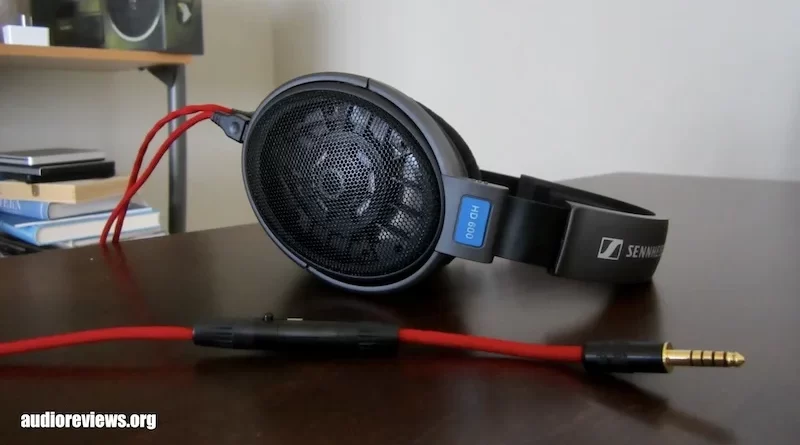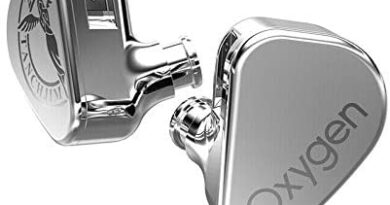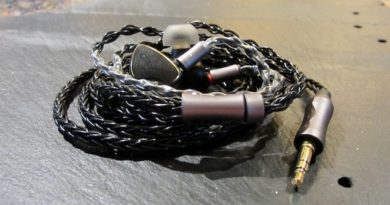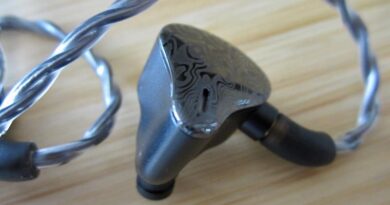Sennheiser HD 600 With Hart Audio HC-5 Modular Cable REVIEW – The Song Remains The Same
I thank Sennheiser for replacing my faulty 2017 HD 600 with this new one most recently. I had purchased the original unit and the Hart HC-5 cable myself. The HD 600 has always been my reference headphone.
The Sennheiser HD 600 has been one of the references for a neutral sounding headphone since 1997. It is as significant today as 28 years ago, and even Sennheiser has not succeeded in producing a new model that pushes it off its throne.
PROS
- Great rich, natural sound
- Very good treble extension
- Superb haptic
- Very light
CONS
- Not the tighest bass
- Narrow stage
- Relatively high caliper pressure
Introduction
Since the HD 600’s arrival in 1997, everything has been said about this classic headphone that is still going strong in 2025. It has experienced some cosmetic makeovers and material changes over the years, and production had shifted from Sennheiser’s German headquarters to Ireland, then to Romania, and back to Ireland, where it is still manufactured today. But its sound has always remained the same (more or less).
In 2004, the HD 600 received a younger sibling, the bassier (and pricier) HD 650, but the purists still preferred the leaner, more transparent HD 600. Nevertheless is the HD 650 the deal of the millennium, as its HD 6XX labelled and technically/sonically identical budget version has sold 200,000 times through drop.com. The 600 series is a standard staple for every audiophile and all six of us own either an HD 600, 650, or 6XX.
Recently, Sennheiser’s series added a few more models to their 600 series, such as the technically superior HD 620S, but many old guys still continue holding on to their beloved HD 600 as its tonality is simply irresistible to them.
Protagonists have claimed that the HD 600 has a narrow soundstage and a very limp bass, and it is particularly the low end in headphones that has seen major developments/improvements since the late 1990s. The HD 600’s bass response can be improved by a mod kit available from Custom Cans UK. You can read about it in every detail here:
The pair of HD 600 I am reviewing is their latest iteration, made in Ireland, and OOTB, that is unmodded. But I have added a modular HC-5 Hart Audio headphone cable of oxygen-free Mogami copper, made in the USA. Not only does it look good and is very pliable, but I had it made in a custom length, and I can swap the plugs (I purchased the 4.4 mm and XLR adapters). Get yours before Trump puts tariffs on them ;).
Whether the HC-5 sounds better than the stock cable I have not tested, but the latter looks rather dated, is too long for my purposes, and is single ended (most modern amplifiers have also a balanced circuit which are more powerful and produce more depth of stage). And the lively red HC-5 adds an attractive accent to the HD 600’s grey polycarbonate design, like a colourful tie or bow tie to a white shirt.
Strangely enough, when I once talked to Sennheiser about their little attractive cable, they did not understand what I wanted.

Specifications Sennheiser HD HD 600
| Article number (SKU) | 508824 |
| Frequency response (speaker) | 12 Hz – 40,500 Hz |
| Sound pressure level (SPL) | 97 dB (1 V) |
| Impedance | 300 Ω |
| Total harmonic distortion (THD) | < 0,1 % (1 kHz, 1 V) |
| Cable length | 3 m |
| Adapter | 3.5 mm stereo jack plug |
| Transducer principle | dynamic, open |
| Weight | 260 g |
| Connector | 3.5 mm stereo jack plug |
| Ear coupling | circumaural |
| Magnetic field | 1.8 mT |
Physical Things and Usability
Earlier versions of the HD 600 came in a fancy, heavy storage box, but the current packaging age is rather lean: headphone, cable, and paperwork. The HD 600 has experienced a modern makeover: what has changed from the blue-and-black speckled 2017 version is its colour and material of the frame: it currently comes in a stylish uniform grey, and the Sennheiser logo only occupies the left upper side of the headband (as opposed to a larger transfer all around the headband).
The new polycarbonate appears to be harder and more brittle than the older speckled version, and the caliper pressure appears to have increased. But the latter could also be owed to the new velour earpads (since 2021, Chinese made), which appear a bit stiffer than the previous generation. These may contribute to better note definition and accurate sound.
As to the quality of the new polycarbonate frame: I would not worry as Sennheiser appear to be a leader in material science. The whole headphone is very durable, and if something breaks, it is easily serviceable. You easily find YouTube videos on how to change the earned and how to take the earcups apart and access the driver capsule. Companies like Dekoni and Yaxi offer earpad alternatives.
The 3 m stock cable and its 2 pin contacts are…functional but basic, considering the after-market offerings available. I was looking for a 4.4 mm balanced cable that also serves as eye-candy, all at a reasonable price – and got lucky at Hart Audio. They are friendly, prompt, and helpful. I needed help as I am getting lost on their comprehensive website.
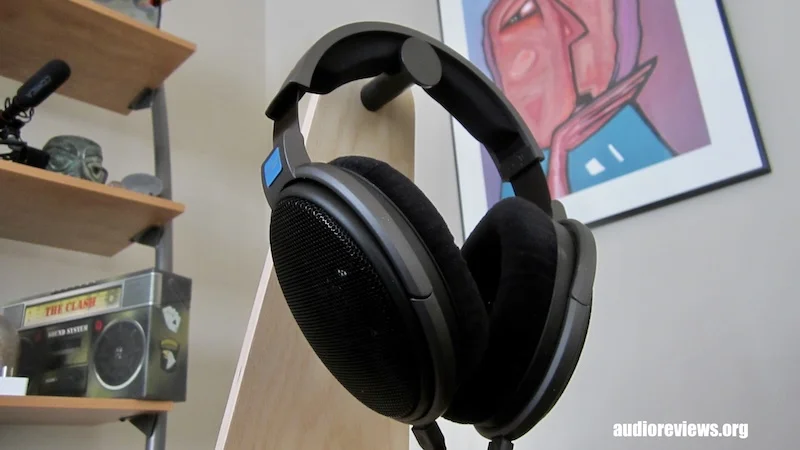
Tonality and Technicalities
The Sennheiser HD 600 is considered to be a natural, neutral, and homogenous sounding earphone without any annoying dips or spikes. I’d add some minimal warmth to the “neutral” as it is certainly not an analytical headphone. .What has made the Sennheiser HD 600 popular is its wonderful rich and natural midrange, which probably has not been achieved in this price category.
I have used HD 600s as my personal reference since 2017, and connected it to countless different equipment.
Let’s start from the low end, which appears to be superseded in terms of speed and articulation by more modern headphones. A lack of bass extension has been criticized all along and the bass lightness (and limited tightness) can result in some muddiness. The current models features different earpads that let the low end shine in a different light, probably partly because they are new and rather firm.
In terms of quantity, the bass misses nothing, it reaches into the lowest octaves. Where it lacks is in quality: bass lines can be borderline wooly, that’s where its younger HD 620S sibling offers a much better defined focus/tightness. The HD 600’s low end could be a bit more dynamic, firm, and punchy (Queen’s Another one bites the dust sounds a bit flat). I personally don’t mind the impact as is and certainlyhad worse. If you want better dynamics and punch, get the Sennheiser HD 620S.
It is not the bass, people love the Sennheiser HD 600 for, it is the midrange: rich, natural, organic and intimate…with present vocals, as should be. Very realistic – and irresistible for many. Speaking of intimate, people report a shoutiness from a boost around the 3.5 kHz area, but this probably also depends on the source used. I did not experience this with the slightly warm Earmen TR-amp.
Midrange clarity is supported by a boosted treble at above 10 kHz, which adds fake resolution to the already very good midrange resolution, clarity, and transparency. Yep, it is the midrange where the music plays, literally. Treble, although well extended, is not offensive and well resolving.
Although the Sennheiser HD 600 is an open-back headphone, the stage is not the widest…it can be a bit cramped. If there are many musicians on stage, separation and layering suffer. Again, if you want improved technicalities, get the more accurate playing HD 620S, which lacks the HD 600’s soul and naturalness.
I currently have the highly lauded Sennheiser HD 550 on my desk (and will write a detailed review asap). Like the HD 600, it has this wonderfully natural midrange, but a stronger and tighter bass with great extension. It is much lighter and more comfortable owing to a lower caliper pressure and more space underneath the earpads. Both have a similarly extended, sweet treble.
The HD 550 has a slightly wider but flatter soundstage than the HD 600, but it cannot reach its big brother in terms of resolution, although it has better note definition (and leaner notes). The HD 600 sounds more substantial, more tactile. More to follow.
Concluding Remarks
Whenever I use the HD 600, time appears to stop. After 28 years and counting, the HD 600 still remains reference in its class. It is an audiophile standard staple: everybody should have one. And if you don’t want to fork out Sennheiser’s asking price, get the slightly bassier $200 USD HD 650 from drop.com.
Oh, Sennheiser still produce the HD 600 series but no spare parts anymore. A former employee recommended me to stock up with all parts I can get a hold of.
Until next time…keep on listening

DISCLAIMER
Our generic standard disclaimer.
You find an INDEX of our most relevant technical articles HERE.



